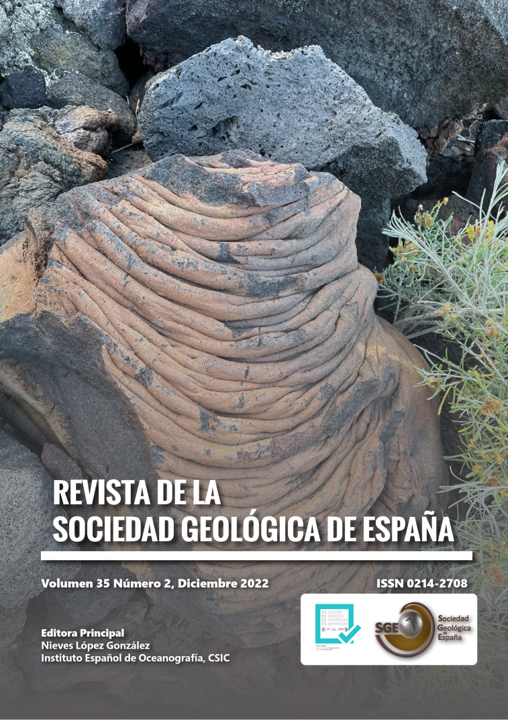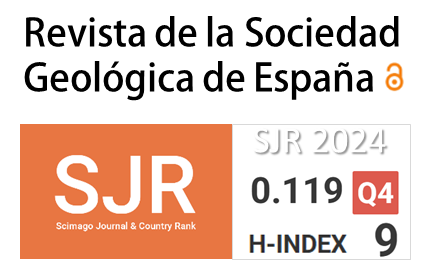Ideas for blocking the climate change
DOI:
https://doi.org/10.55407/rsge.96426Keywords:
Climatic change, energy dependencyAbstract
There is no doubt that we are suffering another of the many climate changes that from the information provided by sedimentary records, we know that our planet has suffered; but we also recognize that the current change is attributed to the burning of fossil fuels: coal, oil and natural gas. In view of this evidence, it is worth asking whether our institutions and governments are acting in the right direction and without a cynicism, because in the face of the need for these fuels, they accept that they are produced from countries that, among other things, have led to a high level, the hydraulic fracturing, EEUU case, and thanks to it provide us with the natural gas that Europe needs, when foreign circumstances, the Ukraine war, show our needs and dependence on fossil fuels. The term cynicism qualification comes to mind because it means accepting that not here, but externally yes, because what happens outside Spain and Europe does not contribute to climate change. It is well known that our energy resources are considered valid when they come only from renewable energies, but it is equally obvious that if the wind, sun and rain fail, we would have serious problems, not only to develop, but also to maintain the well-being that our societies demand. From the geological knowledge of the Spain and Europe regions, we know that if we allowed exploration and in particular hydraulic fracturing, our natural gas imports could be significantly reduced.
References
British Petroleum, 2021. 70st edition of Statistical Review of World Energy. https://www.bp.com/content/dam/bp/business-sites/en/global/corporate/pdfs/energy-economics/statistical-review/bp-stats-review-2021-full-report.pdf (último acceso 07/11/2022).
British Petroleum, 2022. 71st edition of Statistical Review of World Energy. https://www.bp.com/content/dam/bp/business-sites/en/global/corporate/pdfs/energy-economics/statistical-review/bp-stats-review-2022-full-report.pdf (último acceso 07/11/2022).
IGME, 2009. Proyecto ALGECO2. https://info.igme.es/geologiasubsuelo/AlmacenamientoCO2/Algeco2.aspx (último acceso 07/11/2022).
Keeling. Ch.D., 1978. The Influence of Mauna Loa Observatory on the Development of Atmospheric CO2 Research. En Mauna Loa Observatory a 20 th Anniversary Report (J. Miller, Ed), NOAA Special Report, 36-54.
Ley de Transición Energética y Cambio Climático, 2021. Boletín Oficial del Estado nº 121: 44p.
López Barrera, A.I., 2011. Caracterización geológica y petrofísica mediante adquisición e interpretación de diagrafías en formaciones con potencial como sello y almacén de CO2 en cuencas de la Península Ibérica. IV Jornadas de Investigadores en Formación en Ciencias de la Tierra. Libro de Resúmenes. Instituto Geológico y Minero de España, Madrid, 61‐62.
Martínez, R., Suárez, I., 2011. Characterization of geological storages of CO2 in Spain. Seminario Anual de la Red Europea CO2Net. Londres.
Martínez del Olmo, W., 2007a. Propuesta de Reservas del Estado para el secuestro del CO2. Fundación para Estudios de la Energía, Madrid, 47 p.
Martínez del Olmo, W., 2007b. Una primera selección-evaluación de lugares geológicos donde inyectar el CO2. Repsol Exploración y Fundación para Estudios de la Energía, Madrid, 166 p.
Martínez del Olmo, W., 2008. Posibles almacenamientos de CO2 en España. En El futuro del carbón en la política energética española. Fundación para estudios sobre la energía, Madrid, 225-246.
Martínez del Olmo, W., 2018. Geología, cambio climático y como tratar de aminorarlo. XIV Congreso Internacional de Energía y Recursos Minerales, Sevilla, 10 p.
Martínez del Olmo, W., 2019a. Cambio climático, acuerdos de Paris y trampas geológicas donde secuestrar el CO2 en España. Revista de la Sociedad Geológica de España, 32 (2): 87-106.
Martínez del Olmo, W., 2019b. The Spanish petroleum systems and the overlooked areas and targets. Boletín Geológico y Minero. 130 (2): 289-315. https://doi.org/10.21701/bolgeomin.130.2.005
Martínez del Olmo. W., 2021. Almacenamiento de hidrógeno en España. Revista de la Sociedad Geológica de España, 34 (2): 53-59. https://doi.org/10.14195/0870-4147_53_6
Milankovitch, M., 1920. Théorie mathématique des phénomènes thermiques produits par la radiation solaire. Gauthier-Villars, Paris, 339 p.
Suárez Díaz, I., 2011. Perspectivas del Almacenamiento Geológico de CO2 en España. Proyectos en el IGME. II Coloquio Hispano Francés sobre Almacenamiento Geológico de CO2. Ponferrada (España). http://www.coloquiohfalmacenamientoco2.es/descargas.php
Petit, J.R., Jouzel, J., Raynaud, D., Barko, N.I., Barnolas, J.M., Basile, I., Bender, M., Chappellaz, J., Davis, M., Delaygue, G., Delmotte, M., Kotlyakov, V.M., Legrand, M., Lipenkov, V.Y., Lorius, C., Pépin, L., Ritz, C., Saltzman, E., Stievenard, M., 1990. Climate and atmospheric history of the past 420,000 years from the Vostok ice core, Antarctica. Nature, 399: 429-436. https://doi.org/10.1038/20859
Termuehlen, H., 2001. 100 years of power plant development: focus on steam and gas turbines as prime movers. ASME Press, New York, 208 p.
Tripati, A.K., Roberts, C.D., Eagle, R.A., 2009. Coupling of CO2 and ice sheet stability over major climate transitions of the last 20 million years. Science, 326: 1394-1397. https://doi.org/10.1126/science.1178296
Zapatero, M.A., Martínez del Olmo, W., 2008. Confinamiento del CO2. En: El futuro del carbón en la política energética española, Fundación para estudios sobre la energía, Madrid: 219-225.
Downloads
Published
Versions
- 2023-06-19 (2)
- 2022-12-14 (1)
How to Cite
Issue
Section
License

The Author retains the copyright and grants to the Geological Society of Spain the right of first publication and grants non-exclusive distribution rights for this article for the duration of the literary property under Spanish law, in all current or future media, being the work available simultaneously to its publication under the Creative Commons CC BY-NC-SA 4.0 license, which allows copying and transforming the work, but taking into account that the distribution of the transformed work must be under the same license and never for commercial purposes, while acknowledging authorship and original publication in the Revista de la Sociedad Geológica de España.










